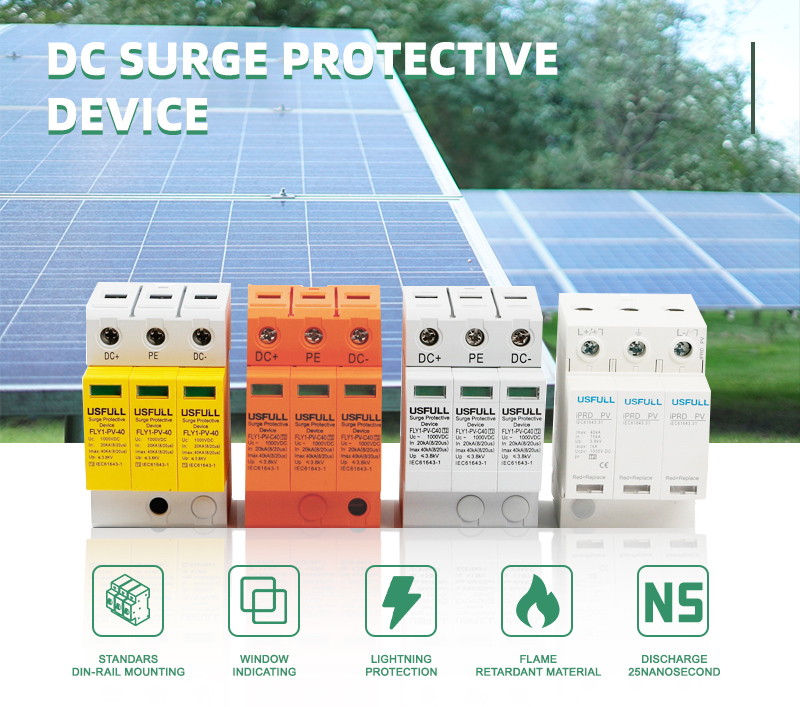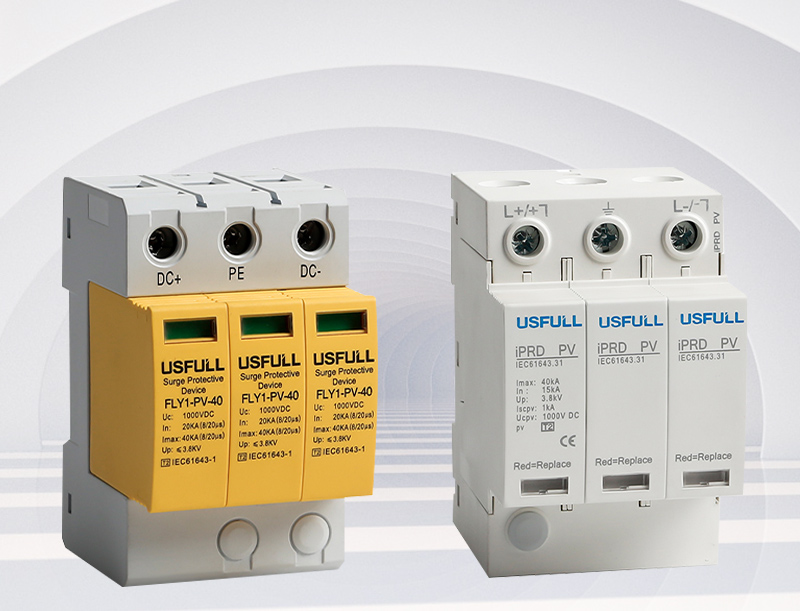A Surge protection device (SPD) must protect electrical systems, such as the consumer unit, cabling, and accessories, from short-term overvoltages.
A few examples of devices that may benefit from their use in an installation are computers, TVs, washing machines, and safety circuits like smoke detectors and emergency lights. Overvoltages that happen quickly could damage the electronic circuitry in sensitive devices.
Materials that don’t smell and can’t catch on fire are used. We choose our parts carefully, keep a close eye on our processes, and check our finished products carefully to ensure they meet our high standards. As a PV standard surge protection device, the USFULL FLY1-PV SPD will protect your electrical appliances and your PV system. International standards set by the International Organization for Standardization are followed at every step of the process, from choosing the raw materials to making the final product (ISO).
There are three different types of Surge Protective Devices:
- Type 1 SPDs would be put in at the source, the main distribution panel.
- Installing Type 2 SPD on sub-distribution boards
- The protected load is placed near the Type 3 SPD, which is very helpful. The only way to use them is with Type 2 SPD.
The modular, disassemblable design is adaptable. Modular, two-part design that saves money and makes life more enjoyable by letting you avoid costly maintenance. The USFULL surge protector is easy to set up and use because it works with din rails. We offer a wide range of designs and colours so that you can get great performance in the best way.
Type 1: Dystonia that gets worse over time
The Type 1 SPD is the best choice for industrial and service-sector buildings with a lightning protection system or a mesh cage.
It keeps lightning from breaking sensitive things. Moreover, In the event of a lightning strike, the back-current that runs from the earth conductor to the rest of the network’s cables may be stopped.
A current wave of 10/350 s is typical for Type 1 SPD.
Type 2: ADHD
The Type 2 SPD is the main safety device for all electrical systems with low voltage. It is put in every switchboard to protect the loads and stop overvoltages from happening.
Right now, the wave at 8/20 s is a sign of Type 2 SPD.
Type 3: Disturbance of the Sleep-Wake Cycle
These SPDs can only discharge a certain amount. Because of this, they must be set up to work with Type 2 SPD and near-sensitive loads.
Type 3 SPD is different because it has waves of voltage (1.2/50 s) and waves of current (8/20 s).
Should I install Surge Protection Device or not?
The most recent version of the IET Wiring Regulations, BS 7671:2018, says that protection against transient overvoltage must be given where the overvoltage may cause damage unless a risk assessment is done.
Cause death or serious bodily harm; disrupt public services; destroy cultural treasures; slow down business production; affect many people close to each other.
This rule applies to all buildings, whether homes, businesses, or shops.
Under the IET Wiring Regulations (BS 7671:2008+A3:2015), surge protection is now required for all buildings, even single-family homes. It used to be optional in some situations (like when supplied via an underground cable). This group includes all homes that are getting new wiring or are being built from scratch.
Even though the IET Wiring Regulations don’t apply to the past, if you’re working on an existing circuit in an installation that was designed and installed according to an earlier edition of the IET Wiring Regulations, you’ll want to make sure the new version of the circuit complies with the latest edition. This is especially important when you want to protect the system by adding SPDs.
If there is enough room, surge protection can be put in the current consumer unit. Also, It can be put in a nearby external enclosure if there needs to be more room.
It’s also a good idea to check with your insurance company again since some policies require that equipment be covered with an SPD before the insurance company will pay for the damage.
The specifications and instructions are all written on the surface and easy to find in a way that lets people see the wires. If you still have questions, you can contact us through inquiry.


